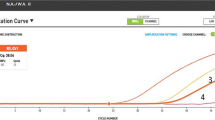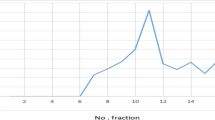Abstract
By heat treatment killer strains of the type K1 of Saccharomyces cerevisiae that are known to harbour dsRNA plasmids were completely cured, whereas only a small fraction of the clones of the killer type K2 had lost the dsRNA dependent killer character. The K2 killers but not the strains of killer type K1 were easily cured by cycloheximide. Killer strains of Hanseniaspora uvarum were not curable by heat treatment. Curing was successfull with cycloheximide or 5-fluorouracil. Two double-stranded RNA plasmids were detected in the killer strains of H. uvarum. The smaller dsRNA plasmid was absent in the strains that were cured of their killer character by 5-fluorouracil. The killer character of H. uvarum was transferred to S. cerevisiae by spheroplast fusion. The fusion products showing the killer character contained both dsRNA plasmids, obviously the smaller plasmid (M-dsRNA) carries the genes for killer toxin formation. Killer strains of Pichia kluyveri were not curable of their killer character, in these strains no dsRNA plasmids were detected.
Similar content being viewed by others
References
Bussey H (1981) Physiology of killer factor in yeast. In: Rose AH, Morris JG (eds) Advances in microbial physiology, vol 22. Academic Press, New York, pp 93–122
Fink GR, Styles CA (1972) Curing of a killer factor in Saccharomyces cerevisiae. Proc Natl Acad Sci USA 69:2846–2849
Fried HM, Fink GR (1978) Electron microscopic heteroduplex analysis of “killer” double-stranded RNA species from yeast. Proc Natl Acad Sci USA 75:4224–4228
Gunge N, Sakaguchi K (1981) Intergeneric transfer of desoxyribonucleic plasmids, pGKL1 and pGKL2, from Kluyveromyces lactis into Saccharomyces cerevisiae by cell fusion. J Bacteriol 147:155–160
Makower M, Bevan EA (1963) The inheritance of a killer character in yeast (Saccharomyces cerevisiae). Proc Int Congr Genet XI 1:202
McMaster GK, Carmichael GG (1977) Analysis of single- and double-stranded nucleic acids on polyacrylamide and agarose gels by using glyoxal and acridine orange. Proc Natl Acad Sci USA 74:4835–4838
Maniatis T, Fritsch EF, Sambrook J (1982) Molecular cloning. A laboratory manual. Cold Spring Harbour Laboratory, Cold Spring Harbour, New York
Mitchell DJ, Bevan EA (1983) ScV “killer” viruses in yeast. In: Spencer JFT, Spencer DM, Smith ARW (eds) Yeast genetics. Springer, Berlin Heidelberg New York, pp 371–411
Mitchell DJ, Bevan EA, Herring AJ (1973) Correlation between dsRNA in yeast and killer character. Heredity 31:133–134
Pfeiffer P, Radler F (1984) Comparison of the killer toxin of several yeasts and the purification of a toxin of type K2. Arch Microbiol 137:357–361
Philliskirk G, Young TW (1975) The occurrence of the killer character in yeast of various genera. Antonie van Leeuwenhoek J Microbiol Serol 41:147–151
Radler F, Schmitt M (1987) Killertoxins of yeasts: Inhibitors of fermentation and their adsorption. Food Protection 50:334–338
Radler F, Pfeiffer P, Dennert M (1985) Killer toxins in new isolates of the yeasts Hanseniaspora uvarum and Pichia kluyveri. FEMS Microbiol Lett 29:269–272
Seki T, Choi E, Ryu D (1985) Construction of a killer wine yeast. Appl Environ Microbiol 49:1211–1215
Stumm C, Hermans JM, Middelbeek EJ, Croes AF, De Vries GJML (1977) Killer-sensitive relationships in yeast from natural habitats. Antonie van Leeuwenhoek J Microbiol Serol 43:125–128
Tipper DJ, Bostian KA (1984) Double-stranded ribonucleic acid killer systems in yeast. Microbiol Rev 48:125–156
Vodkin M, Katterman F, Fink GR (1974) Yeast killer mutants with altered double-stranded ribonucleic acid. J Bacteriol 117:681–686
Weslowski M, Wickner RB (1984) Two new double-stranded RNA molecules showing non-mendelian inheritance and heat-inducibility in Saccharomyces cerevisiae. Mol Cell Biol 4:181–187
Wickner RB (1974) “Killer character” of Saccharomyces cerevisiae: Curing by growth at elevated temperature. J Bacteriol 117: 1356–1357
Wickner RB (1981) Killer systems in Saccharomyces cerevisiae. In: Strathern JN, Jones EW, Broach JR (eds) The molecular biology of the yeast Saccharomyces. Life cycle and inheritance. Cold Spring Harbour, New York, pp 415–444
Wickner RB (1986) Double-stranded RNA replication in yeast: the killer system. Ann Rev Biochem 55:373–395
Young TW (1981) The genetic manipulation of the killer character into brewing yeast. J Inst Brew 81:292–295
Young TW (1987) Killer yeasts. In: Rose AH, Harrison JS (eds) The yeasts, vol 2, 2nd edn. Academic Press, London, pp 131–164
Young TW, Yagiu M (1978) A comparison of the killer character in different yeasts and its classification. Antonie van Leeuwenhoek J Microbiol Serol 44:59–77
Author information
Authors and Affiliations
Additional information
This paper was kindly supported by a grant from the Deutsche Forschungsgemeinschaft
Rights and permissions
About this article
Cite this article
Zorg, J., Kilian, S. & Radler, F. Killer toxin producing strains of the yeasts Hanseniaspora uvarum and Pichia kluyveri . Arch. Microbiol. 149, 261–267 (1988). https://doi.org/10.1007/BF00422015
Received:
Accepted:
Issue Date:
DOI: https://doi.org/10.1007/BF00422015




